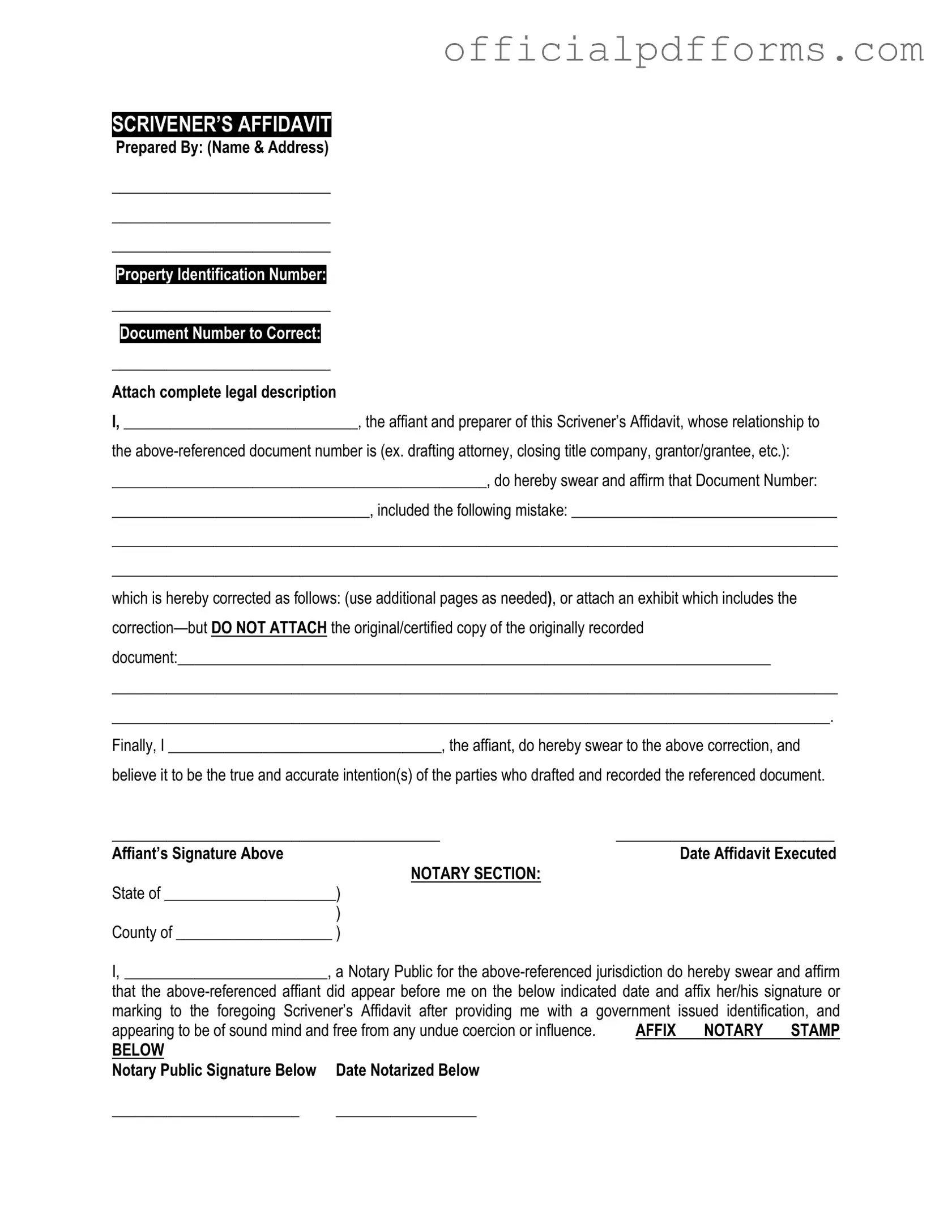What is a Scrivener's Affidavit?
A Scrivener's Affidavit is a legal document used to clarify or correct errors in a previously executed document. It is often utilized when there are mistakes in the wording or details of legal documents, such as deeds, contracts, or wills. The affidavit serves as a sworn statement by the person who prepared the original document, affirming that the errors were unintentional and providing the correct information.
When should I use a Scrivener's Affidavit?
You should consider using a Scrivener's Affidavit when you discover inaccuracies in a legal document that could potentially affect its validity. Common scenarios include:
-
Misspellings of names or places
-
Incorrect dates or figures
-
Omissions of critical information
Using this affidavit can help ensure that the original intent of the document is preserved and recognized by all parties involved.
Who can prepare a Scrivener's Affidavit?
Typically, the person who drafted the original document is the one who prepares the Scrivener's Affidavit. This could be an attorney, a legal assistant, or even the individual who created the document, provided they are knowledgeable about the corrections needed. It’s important that the person preparing the affidavit has firsthand knowledge of the circumstances surrounding the errors.
A Scrivener's Affidavit generally includes:
-
The name and address of the affiant (the person making the affidavit).
-
A clear statement identifying the document that contains the errors.
-
A detailed description of the errors found.
-
The correct information that should replace the erroneous details.
-
A statement affirming that the errors were unintentional.
-
The affiant's signature, along with a notary public’s acknowledgment, if required.
This information helps to clarify the original intent and ensures that the document can be properly interpreted moving forward.
Is a Scrivener's Affidavit legally binding?
Yes, a Scrivener's Affidavit is considered a legally binding document once it is properly executed. It serves as a sworn statement, which means that the affiant is legally responsible for the truthfulness of the information provided. However, the effectiveness of the affidavit may depend on the jurisdiction and the specific circumstances of the original document.
Do I need a lawyer to file a Scrivener's Affidavit?
Where do I file a Scrivener's Affidavit?
The filing location for a Scrivener's Affidavit typically depends on the nature of the original document. If the affidavit pertains to a real estate deed, for example, it would be filed with the county recorder's office where the property is located. For other types of documents, such as contracts or wills, the affidavit may need to be filed with the court or relevant administrative office. Always check local regulations to ensure compliance.
